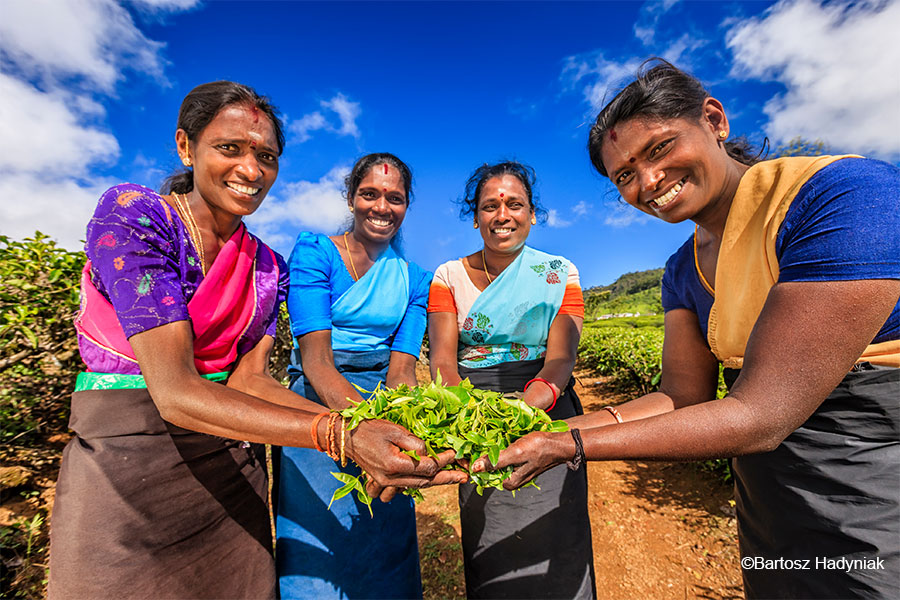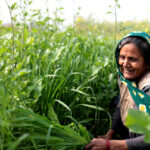Evidence on Women’s Economic Empowerment- Findings of Value Chain SR
75% of women farmers play active roles as producers, traders, processors, laborers, and entrepreneurs; however, they are disadvantaged as their roles are largely unrecognized (Gurung et al., 2015). Gender inequality exists in many different sectors and sub-sectors. In our CGIAR-funded project, we looked at the effects of value-chain interventions on women’s economic empowerment. However, the agricultural value chains are influenced by sociocultural norms and gender dynamics and impact the distribution of resources, benefits, and access to opportunities (Rubin et al., 2019).
The review aims to assess the effects of value chain intervention in improving women’s economic empowerment and this is a boarder objective under the UN Sustainable Development Goal 5. Women’s economic empowerment can be achieved when women enjoy their right to control and benefit from resources, assets, income, and their own time, and when they can manage risk and improve their economic status and well-being’ (Kidder et al., 2017).
The review included 120 studies and found that value chain interventions improve women’s economic outcomes such as income, asset holding, productivity, and saving. The findings suggested that this occurs through the acquisition of skills and improved input rather than improvement in access to profitable markets. The review finds the intervention’s effects on women’s ability, decision- making and leadership but it is limited in size.
In review, we have identified the factors that are either conducive or obstructive to the achievement of our desired outcome. These factors will prove instrumental in the formulation of policies, programs, and laws in this domain. The barriers can broadly be categorized as stereotypes that are conditioned by social norms and culture, the unavailability of women due to their time constraints, high levels of illiteracy, mobility constraints, limited access to land, social capital constraints, and the influence of social, political, and religious ideologies. The facilitators of successful interventions include women’s group membership, identifying gendered crops, out-migration of men, and the success of neighboring participants. These findings are expected to facilitate a deeper understanding of the factors that shape the outcomes in this context and inform the development of appropriate interventions.
The prevalence of gender inequality barriers identified across all areas is surprising. During my tenure as a national monitor for the Ministry of Health, I had the opportunity to visit villages in Maharashtra with low immunization rates. My interactions with women whose children were either not vaccinated or partially vaccinated were revealing. I learned that a woman requires permission from her husband and elders to get her child vaccinated. The elders in the home must agree for her to be able to take her child to the vaccination center. Despite participating in awareness programs and receiving counseling, women do not have decision-making power when it comes to the vaccination of their children. Similarly, in the value chain, women lack agency. They are unable to decide which crops to grow, lack the mobility to sell produce in the market, and have no control over the income they receive after selling their crops.
The effectiveness of interventions that promote women’s participation in decision-making and access to economic outcomes has been highlighted by evidence. Self-help groups (SHGs), farmer-based organizations, and cooperatives are some of the ways through which horizontal integration can be achieved and women’s development can be promoted in India.
A female participant in an SHG shared her experience, “My husband used to manage everything; he decided what he would buy and told me that wives should not get involved in these issues because they lack the capacity. So, for me, this group is very important because we, as women, have learned that we have the capacity to manage ourselves and can work.” (Bacon, 2010, p. 61)
The interventions aimed at improving women’s economic outcomes have proven to be successful. However, they do not always result in an increase in non-economic empowerment. The findings of the study suggest that cultural barriers and gender stereotypes, which dictate that women must prioritize their role as caregivers, are major factors that prevent women from attaining non-economic empowerment.
There are many customs, beliefs, and attitudes that restrict women to the domestic sphere. It is not surprising to learn from the evidence that women’s increased workload is one of the barriers to achieving economic and empowerment outcomes. Women are expected to multitask and manage various responsibilities such as taking care of the home, family, kids, cooking, and childbirth. This leaves them with little time or resources for training, capacity building, market engagement, or literacy levels. According to research, a lack of training, a high level of illiteracy, and lower participation rates are the primary barriers to women’s economic empowerment. Most of the research on this topic comes from South Asia and Sub-Saharan Africa.
For women to benefit from participation in value chains and achieve empowerment, they must have control over resources, decision-making power, leadership positions, capacity building, mobility, and land rights.
In conclusion, achieving women’s empowerment requires integrated multi-sectoral and multi-component interventions geared toward women.




